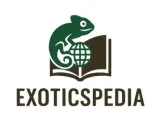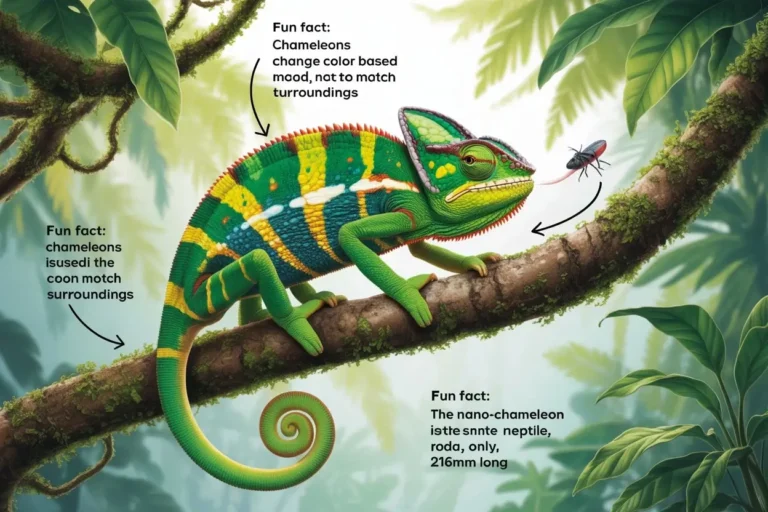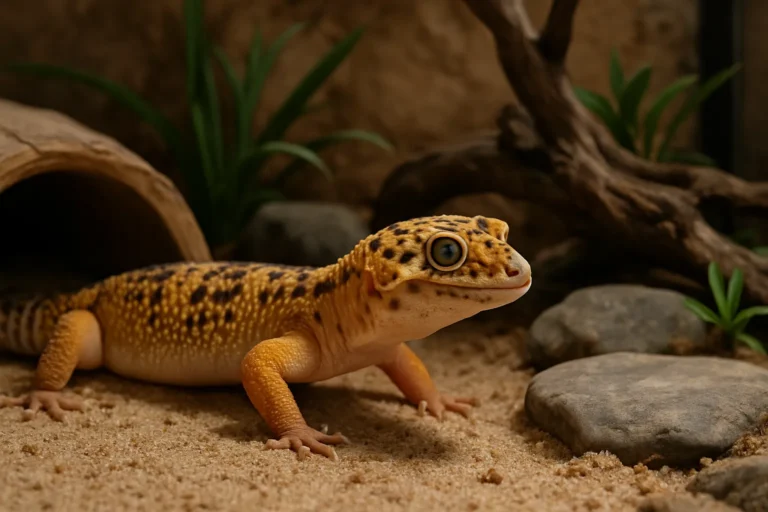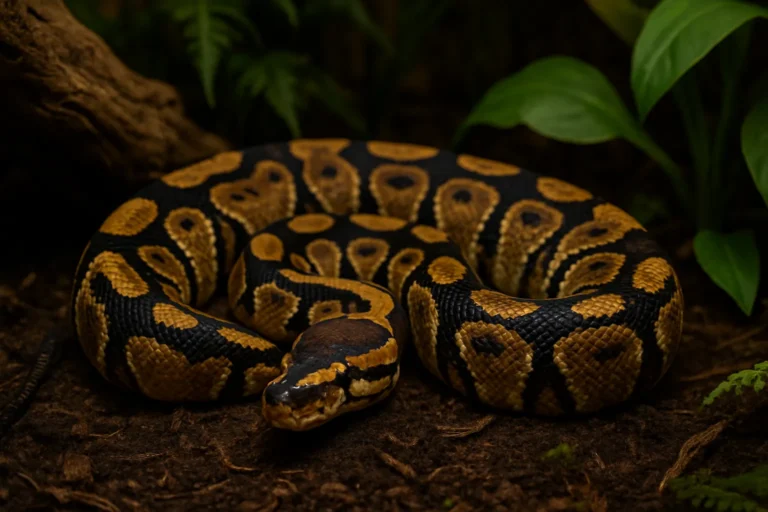Red-Eyed Crocodile Skink: Everything You Need to Know
The red-eyed crocodile skink (Tribolonotus gracilis) is a unique and captivating reptile that has gained popularity in the exotic pet world. Known for its striking appearance and dinosaur-like look, this small lizard hails from the forest floors of South East Asia, including New Guinea and the Admiralty Islands. These skinks are best suited for intermediate reptile keepers due to their specific habitat needs and elusive temperament. If you’re considering one as a pet, here’s everything you need to know.
What Is a Red-Eyed Crocodile Skink?
Belonging to the family Scincidae, the red-eyed crocodile skink gets its name from two standout features: bright red-orange rings around the eyes and spiny, crocodile-like dorsal scales. These features give it a fierce look, despite its shy nature. Juveniles lack the red eye rings, which develop around six months of age. Adults are typically 7–10 inches (25cm) long, with males being slightly larger than females.
Natural Habitat and Behavior
In the wild, these skinks are terrestrial and thrive on the rainforest floors amidst leaf litter, moss, and tree crevices. They are crepuscular, meaning they’re most active during dawn and dusk, feeding and exploring during these cooler times. Although capable of climbing and swimming, they prefer to stay grounded and use their excellent camouflage to hide from predators.
They are also found near water sources and even adapt to living in coconut plantations. Their secretive nature makes them difficult to observe in the wild and even in captivity.
Temperament and Handling
Red-eyed crocodile skinks are not particularly social with humans. They’re known to become stressed with excessive handling, often freezing or playing dead when frightened. Handling should be minimal and done with care, as these reptiles are also quite fast and skittish. Each skink has a distinct personality, and while some tolerate interaction better than others, they are generally best enjoyed visually.
Females become particularly defensive after laying eggs, covering them with their bodies and aggressively chirping or biting at intruders. This level of maternal care is uncommon among reptiles.
Housing Requirements
To keep a red-eyed crocodile skink healthy, a carefully designed enclosure is essential:
- Minimum tank size: 90 x 45 x 45 cm (36 x 18 x 18 inches) for one adult. A 15-gallon tank is the minimum, but larger is always better.
- Cohabitation: Best housed alone or in a male-female pair only. Same-sex pairs may fight.
- Substrate: Use moisture-retaining materials like coconut fiber, sphagnum moss, paper bedding, or cypress mulch for burrowing (2–3 inches deep).
- Decor: Include logs, cork bark, rocks, and foliage while maintaining open areas for movement.
- Water feature: A shallow pool, stream, or waterfall helps maintain humidity and encourages natural swimming behavior.
- Hides: Provide shelters on both the warm and cool sides of the enclosure to allow for thermoregulation.
Temperature and Lighting
- Daytime basking zone: 30–32°C (86–89°F)
- Cool side: 20–25°C (68–77°F)
- Nighttime drop: As low as 15°C (59°F) is acceptable
- Lighting: Use a full-spectrum UVB bulb, such as Arcadia T5 6% or ShadeDweller, depending on fixture height (keep UVI around 1–2)
- Cycle: 10–12 hours of light daily; replace UV bulbs every 12 months
Use a thermostat to control temperatures precisely and ensure the basking bulb or ceramic heater doesn’t overheat the enclosure.
Humidity Needs
Red-eyed crocodile skinks require high humidity, ideally between 70%–90%. You can maintain this by:
- Misting the enclosure 2–3 times daily
- Including a water feature or fogger
- Using moisture-rich substrate
- Adding live plants to promote a natural, stable environment
- Including a humid hide for microclimate regulation
A digital hygrometer is recommended to monitor and maintain consistent humidity levels.
Diet and Feeding
These skinks are insectivores and should be fed a varied diet of live insects, such as:
Feeding frequency
- Juveniles: Daily
- Adults: Every other day, with optional fast days to prevent obesity
Dust all food with calcium powder with vitamin D3 and offer a multivitamin supplement once a week. Always use a shallow feeding dish or designated feeding area to prevent ingestion of substrate. Learn in depth about Red-Eyed Crocodile Skink complete diet guide and more.
Lifespan and Growth
Red-eyed crocodile skinks typically live for 8–10 years in captivity, with some reaching over a decade with optimal care. Hatchlings weigh just a few grams and grow slowly, reaching adult size in 3–4 years. By 6 months, they start resembling adults in form and color.
Health Concerns
While generally hardy with the right care, red-eyed crocodile skinks can suffer from several health issues:
| Health Issue | Symptoms | Causes |
|---|---|---|
| Metabolic Bone Disease | Limping, deformities, lethargy | Lack of calcium or UVB exposure |
| Respiratory Infections | Wheezing, nasal/eye discharge | Poor ventilation or low temperatures |
| Gastrointestinal Issues | Runny stool, weight loss | Bacterial infections, bad diet |
Always consult a reptile-experienced veterinarian if you notice signs of illness. Regular checks and proper lighting, temperature, and diet can prevent most issues.
Conclusion
The red-eyed crocodile skink is a visually stunning and fascinating reptile that thrives in well-maintained, humidity-rich enclosures. While they may not be cuddly or interactive pets, their prehistoric appearance, unique behaviors, and maternal instincts make them a rewarding choice for dedicated reptile keepers. If you’re up for the challenge and ready to create a naturalistic home, the red-eyed crocodile skink might just be your perfect exotic companion.






